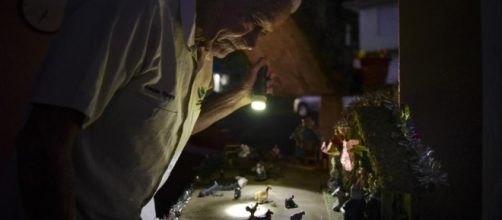Three months after Hurricane Maria swept across Puerto Rico, killing over 1000 people and leaving much more injured, many Puerto Ricans celebrated Christmas day in the dark due to the lack of electrical power across the island.
As a result, food is unable to be stored in refrigerators, there are no running water and traffic lights not working throughout the country amongst numerous other issues.
How many people are there without power?
While it is impossible to know exactly how many people celebrated on the 25th without power because the government's monitoring tools aren't providing reliable readings, their estimates suggest that the electrical grid is operating just over 65% of its capacity while an independent study conducted by local engineers in early December estimated roughly 50% of the island’s 3.3 million people remained without power.
Priority was given to hospitals, water treatment plants and other public necessities, and all though most of the country is thought to regain power by the end of February next year, some areas with a rough combined population total of 80,000 households, mostly in the central towns of Lares, Utuado and Adjuntas, might have to wait until May according to the United States Army Corps of Engineers.
How is Christmas being celebrated this year?
Christmas specialities like roast pork are only available at premium prices and traditionally festive town and city squares are withholding Christmas decorations while darkness has also inspired debates about decorating with Christmas lights in homes.
Puerto Rico Electric Power Authority (Prepa)'s Director of Occupational Safety and Health, Shehaly Rosado Flores, said power consumption generated by Christmas decor doesn't actually affect their efforts to restore the country's power.
What damage has there been?
There has been considerable damage caused to the already outdated and poorly maintained electrical grid along with the lines which collapsed, the poles which snapped, the towers that fell and the substations that flooded.
Almost 50,000 power poles need to be repaired or replaced along with 500 towers.
Why is reparation taking so long?
The towers are so heavy that even helicopters cannot carry them alone so they have to be installed in stages, a single one of which can ultimately take 10 days to complete.
Additionally, some supplies such as the 30,000 power poles that were ordered two weeks after the hurricane are only beginning to arrive now while some 400 miles of cable are only expected to arrive in Puerto Rico in two weeks time.
What else is being done?
Some 3,500 people — from Prepa, the Army Corps and private contractors - are working on restoration and roughly 1,000 more are expected to arrive from other countries in mid-January after signing aid agreements with Puerto Rico.
The Federal Emergency Management Agency (FEMA) has allocated $1.8 billion to the Army Corps while Prepa has spent $75 million thus far; $40 million was spent on Cobra, a company hired to do repair work and over $35 million went to Whitefish Energy Holdings, who was hired as part of a controversial $300 million contract.
While FEMA has said it would not be reimbursing Puerto Rico for this particular contract, there are hopes that they will reconsider.
The Unidos Disaster Relief and Recovery Program for Puerto Rico have also provided water filtration systems, medical support, meals, solar lamps, mosquito nets and other supplies to over 500,000 Puerto Ricans along with 3.4m lbs of food and water.
"There is not enough you can say about the need for electricity. You can't operate society without it," José Calderón, President of the Hispanic Federation told The Guardian newspaper.
What other services have been disrupted?
Electricity is not the only public service which has been disrupted, though it has been the slowest to recover from the damage. 12% of petrol stations, 11% of banks and 8% of supermarkets remain closed according to government estimates while Puerto Rico's telecommunications service and the Aqueducts and Sewers Authority are operating at 93% and 94% of their capacity respectively.
How many people are fleeing Puerto Rico?
As a result of the hurricane, some 296,000 people have fled to Florida since October, according to the Florida Division of Emergency Management and it is also estimated that as much as 14% of the population may leave Puerto Rico by 2019, according to The Centre of Puerto Rican Studies at Hunter College.


